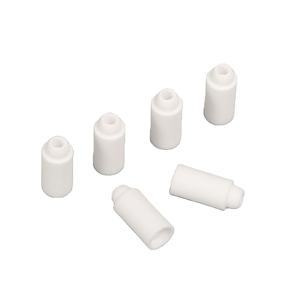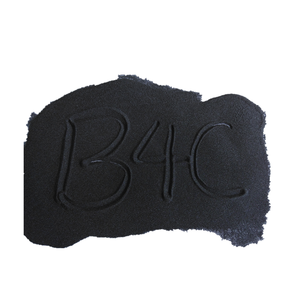Professional industry ceramic supplier, silicon nitride, silicon carbide, aluminum nitride and any other kinds of ceramics.
PRODUCT PARAMETERS
Description
Overview of Alumina Ceramic Refractory Materials Are Used for Lining of Food Baking Kilns and Pharmaceutical Sintering Furnaces
Alumina Ceramic Refractory Materials Are Used for Lining of Food Baking Kilns and Pharmaceutical Sintering Furnaces are non-metallic substances designed to withstand extreme temperatures exceeding 1,000°C, along with harsh chemical and physical stresses. They are essential for the inner linings of industrial furnaces, kilns, reactors, and incinerators, providing critical thermal insulation and structural integrity in processes ranging from metal and glass manufacturing to power generation.
Features of Alumina Ceramic Refractory Materials Are Used for Lining of Food Baking Kilns and Pharmaceutical Sintering Furnaces
-
High-Temperature Resistance: Maintain structural strength and stability at temperatures often exceeding 1500°C.
-
Excellent Thermal Shock Resistance: Withstand rapid heating and cooling cycles without cracking or spalling.
-
Chemical Inertness: Resist corrosion and degradation from slags, molten metals, and acidic or basic environments.
-
High Mechanical Strength: Possess considerable load-bearing capacity at operating temperatures.
-
Low Thermal Conductivity: Provide effective insulation to improve energy efficiency and protect furnace structures.
-
Abrasion Resistance: Withstand erosion from solid materials and gas flows.
Specification of Alumina Ceramic Refractory Materials Are Used for Lining of Food Baking Kilns and Pharmaceutical Sintering Furnaces
Alumina ceramic refractory materials are special ceramics. They contain a very high amount of aluminum oxide. This makes them incredibly tough. They are perfect for lining industrial furnaces. This includes ovens for baking food and furnaces for making medicine tablets. They handle the intense heat needed for these processes very well.
These materials are very pure. They have minimal impurities. This purity is critical for food and medicine production. It prevents contamination. Nothing unwanted gets into the food or the medicine. They are also chemically stable. They resist reactions with other substances inside the furnace. This keeps the product quality high.
Alumina ceramics withstand very high temperatures. They don’t melt or break down easily. This is essential for baking and sintering. Both processes need consistent, intense heat. They also handle rapid heating and cooling cycles well. Furnaces often need to heat up fast and cool down fast. Alumina ceramics manage this without cracking.
These ceramics are very strong. They resist wear and tear inside the furnace. They don’t erode quickly. This means the furnace lining lasts a long time. You don’t need to replace it often. This saves money and reduces downtime. They provide excellent insulation too. They keep the heat inside the furnace chamber. This makes the furnace more efficient. It uses less energy.
Using alumina ceramics ensures a clean operation. There is no dust or particles shedding into the product. This is vital for food safety and medicine purity. They offer reliable performance. They are the trusted choice for demanding thermal applications. Food manufacturers and pharmaceutical companies depend on them.
Applications of Alumina Ceramic Refractory Materials Are Used for Lining of Food Baking Kilns and Pharmaceutical Sintering Furnaces
Alumina ceramic refractory materials are essential for high-temperature industrial applications. These materials are widely used to line food baking kilns. They also serve pharmaceutical sintering furnaces effectively. Alumina ceramics offer exceptional heat resistance. They withstand baking temperatures easily. This makes them perfect for bread ovens and pizza kilns. The lining protects the kiln structure from intense heat. It ensures consistent baking results every time.
These ceramics resist chemical reactions. They do not react with food substances. This prevents contamination during baking. Alumina linings are non-porous. This quality stops moisture absorption. It keeps baked goods dry and crisp. Cleanup becomes simpler too. Food residues do not stick to the surface.
Pharmaceutical sintering furnaces require precise temperature control. Alumina ceramics provide stable thermal performance. They handle sintering processes reliably. Sintering fuses powder materials into solid forms. Alumina linings endure prolonged high-heat exposure. They maintain furnace integrity over time. This reduces maintenance needs significantly.
Material purity is critical for pharmaceutical products. Alumina ceramics are inherently pure. They release no harmful particles into the furnace atmosphere. This safeguards medicine quality completely. Thermal shock resistance is another key advantage. Furnaces experience rapid temperature changes. Alumina linings resist cracking under such stress.
Company Profile
Tanki New Materials Co.Ltd. focus on the research and development, production and sales of ceramic products, serving the electronics, ceramics, chemical and other industries. Since its establishment in 2015, the company has been committed to providing customers with the best products and services, and has become a leader in the industry through continuous technological innovation and strict quality management.
Our products includes but not limited to Aerogel, Aluminum Nitride, Aluminum Oxide, Boron Carbide, Boron Nitride, Ceramic Crucible, Ceramic Fiber, Quartz Product, Refractory Material, Silicon Carbide, Silicon Nitride, ect. please feel free to contact us.

Payment Methods
T/T, Western Union, Paypal, Credit Card etc.
Shipment Methods
By air, by sea, by express, as customers request.
5 FAQs of Alumina Ceramic Refractory Materials Are Used for Lining of Food Baking Kilns and Pharmaceutical Sintering Furnaces
Alumina ceramic refractory materials are important for lining kilns and furnaces in the food and pharmaceutical industries. They handle tough conditions. Here are answers to common questions.
What are alumina ceramic refractory materials? They are man-made products mostly made from aluminum oxide. They are shaped and fired at high heat. This makes them hard and strong. They are used inside baking kilns and sintering furnaces.
Why use alumina ceramics in food baking kilns? Baking bread or other foods needs steady high heat. Alumina ceramics hold heat well. They stop heat from escaping the oven chamber. This saves energy. The lining keeps the temperature even. This helps bake goods properly.
Why use them in pharmaceutical sintering furnaces? Making tablets or other medicine parts needs very precise heat. Alumina ceramics can take these high temperatures. They stay stable. They don’t change shape or break down easily. This is vital for making consistent medical products.
How hot can these alumina ceramics get? They handle very high temperatures. Most types work well over 1500 degrees Celsius. Some special mixes can go even higher. This suits both food baking and medicine furnace needs.
Can they handle sudden temperature changes? Yes, good quality alumina ceramics resist thermal shock. Turning a kiln or furnace on and off creates stress. These materials are designed for that. They expand and contract without cracking easily. This makes them last longer.
Are they safe for food and medicine? Absolutely. Alumina ceramics are inert. They don’t react with food or medicine ingredients. They don’t release harmful substances. This keeps the products inside pure. It meets strict health and safety rules.
REQUEST A QUOTE
RELATED PRODUCTS

Reusable Aluminum Silicate Ceramic Lauer Raw Materials Cut-Process-Friendly for Alumina Die Casting for Refractory Ceramic Parts

Cenospheres Fly Ash For Ceramic Composites Battery Electrodes Thermal Energy Storage Polymer Additives-Premium Refractory
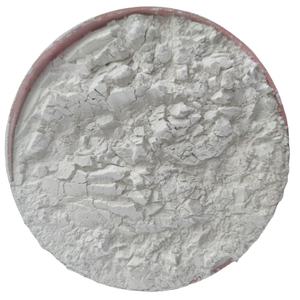
Electric Sodium Silicate Glass Melting Furnace for Ceramic Raw Materials Made with Mgo & Sio2 in the Refractory Category
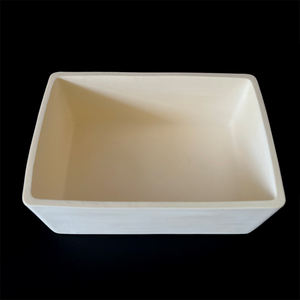
Refractory Fire Brick High Performance Dense 1800 Aluminum Firebrick 230 X 114 X 65 mm Refractory High Alumina Brick s
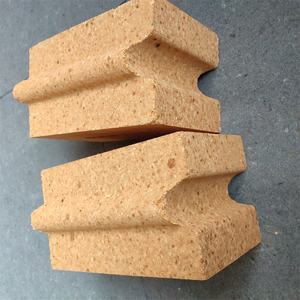
High Purity Ceramic Zirconia Powder Zirconium Oxide Powder For Technical Ceramics Materials Refractory Applications
